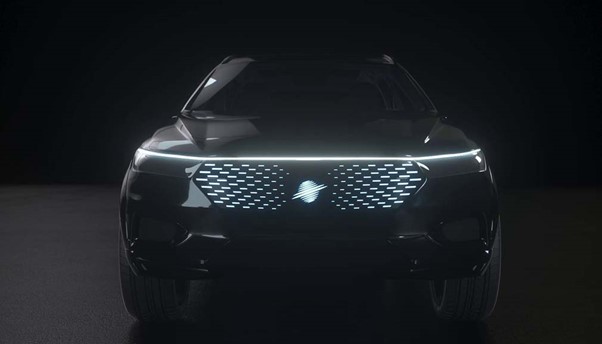
New design concepts for the vehicle front
on March 24 2022 E-cars do not have a classic radiator grille, so the front of the vehicle can be freely designed. HE POSTDETAILS
E-cars do not have a classic radiator grille, so the front of the vehicle can be freely designed. HELLA is developing large panels for this purpose. Not only the design plays an important role, but also the integration of additional functions.
Soft,
flowing, futuristic - if there's one feature by which you can immediately
recognize an electric car, it's the design of the front end. Unlike a
conventional car with an internal combustion engine, an electric vehicle does
not require active engine cooling. "This means that the classic radiator
grille can be dispensed with. This opens up completely new design possibilities
for designers of e-vehicles," says Dr. Frank Huber, Managing Director
responsible for the Business Group Lighting at the internationally positioned
automotive supplier HELLA. "The entire area can therefore be freely
designed. HELLA is developing large-area panels for this purpose. Special
attention is paid not only to the design, but above all to the integration of
further functionalities."
Based on the
company's distinctive lighting and electronics expertise, HELLA integrates
front radar covers, so-called radomes, radar sensors, lidar, cameras for driver
assistance systems and headlamps into the covers. "We act as an innovative
system integrator. Vehicle manufacturers benefit from this because they have to
coordinate fewer sub-suppliers," says Dr. Huber. In addition, HELLA
ensures that the individual components are compatible with each other. The
result is highly integrated, multifunctional panels that also feature a distinctive
design.
Attractive appearance, day and night
To give the
panel an attractive day and night appearance, HELLA uses different
manufacturing processes. For example, structures such as hexagons can be
introduced into the surface with a laser. Manufacturers can individually choose
whether panels are implemented in the vehicle's color, a homogeneous black or
chrome look. HELLA masters new technologies such as injection stamping, film
back injection and others to produce highly decorative components according to
customer requirements. At night or when switched on, the light exits are
illuminated and structures and animations become visible. "Within the
framework of the respective legislation, many things are possible in terms of
design," explains Dr. Huber. Another advantage is that the panels can be
quickly customized, for example for different model variants, by simply
adjusting the design or styling of the surface. "This eliminates the need
for costly mold adjustments, resulting in a faster return on investment for
automobile manufacturers."
Panels take over important safety functions
In addition
to the design aspect, the panel also has an important safety function. It
serves as protection for sensitive systems such as parking assistants or automatic
distance control. If desired, the panel can also be heated, which ensures
reliable functionality even in bad weather. This aspect is becoming
increasingly important, especially in view of autonomous driving.
HELLA
continues to drive forward the development of its own panel technology. The
company's first highly integrated panel went into series production at a
European vehicle manufacturer in the third quarter of 2021. HELLA is also
currently working on a panel over one meter wide for a European e-vehicle
brand, which is expected to go into series production in the third quarter of
2022. The panel requires the highest surface quality and is also
"radar-permeable" in order to be able to implement the automatic
distance control (ACC) function.


